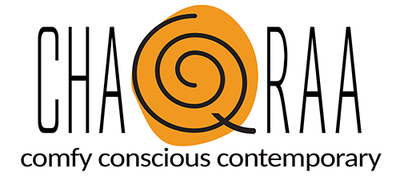Yoga is more than just a physical practice; it’s also a powerful tool for emotional healing. When we experience emotional trauma, it can be difficult to know where to turn. Talking with friends or a therapist can help, but there are times when we need more than that. Yoga offers a unique approach to emotional healing that can help you find balance, release trauma, and cultivate a deeper sense of self-awareness.
The Mind-Body Connection
Yoga emphasizes the mind-body connection, and this is one of the aspects that makes it so effective for emotional healing. Our bodies hold onto emotions and trauma, and these experiences can manifest in physical symptoms. For example, someone who has experienced intense stress or anxiety may feel tension in their neck and shoulders. This physical tension can become trapped in our bodies and can be challenging to release, but the physical practice of yoga can help.
Through yoga, we become more aware of our body and the ways in which it responds to stress and trauma. We learn to tune in to our physical sensations and allow any trapped emotions and tension to be released. This release may come in the form of tears or simply a sense of relief or calmness. By moving our bodies and focusing on the breath, we’re able to shift from a state of stress and tension to one of relaxation and calm.
Creating a Safe Space for Self-Expression
Yoga provides a safe space for self-expression, where we can explore our emotions without fear of judgment or criticism. The yoga mat becomes a sanctuary, a place where we can tune out the world and tune into ourselves. During yoga practice, we move in a way that feels natural to our bodies, allowing us to let go of any self-doubt or comparisons to others.
As we move through asanas, or yoga poses, we can feel our emotions come to the surface. This may feel uncomfortable at first, but as we continue to practice, we learn to sit with these feelings and allow them to be expressed. We may cry, laugh, or simply feel a sense of release as we move through the practice. This emotional release is essential for healing, and yoga provides a space where we can do so in a safe and supportive environment.
The Role of Mindfulness
Mindfulness, or the practice of being present in the moment, is an integral part of yoga. In order to move our bodies in a way that feels natural and safe, we need to be fully present and aware of our physical sensations. This mindfulness helps to shift our focus away from our thoughts and into our bodies. It allows us to be in the moment without worrying about the past or the future.
For someone who has experienced emotional trauma, the ability to be present can be challenging. Mindfulness helps to cultivate a sense of awareness and an ability to be in the moment, which can be incredibly empowering. The mindfulness practice we develop during yoga can spill over into other areas of our lives, enhancing our ability to navigate challenging situations with grace and ease.
The Power of Breath
Breathwork, or pranayama, is a fundamental part of yoga practice. It involves using specific breathing techniques to calm the mind and body and to promote relaxation. By controlling our breath, we’re able to slow down our thoughts and reduce stress and anxiety.
Breathwork helps to create a sense of calmness and clarity, allowing us to tune into our emotions without feeling overwhelmed. It’s a powerful tool for emotional healing, as it enables us to process trauma in a safe and controlled environment. By focusing on our breath, we’re able to calm our minds and create a sense of inner peace.
Finding Balance through Yoga
The physical practice of yoga is incredibly grounding, and it’s a tool that can help us find balance in our lives. The structured nature of yoga practice provides a sense of routine and consistency, which can be incredibly beneficial for someone who has experienced trauma or emotional distress.
Through yoga, we learn to embrace the present moment and to let go of worries about the past or future. We cultivate a sense of self-awareness that allows us to connect with our emotions and our bodies more deeply. We become more accepting of our thoughts and feelings, and we learn to respond to them in ways that are more balanced and constructive.
The Healing Journey
The journey to emotional healing is not always an easy one, but yoga can be an incredibly supportive tool in the process. It provides a safe and nurturing space for self-expression, mindfulness, and breathwork. By moving our bodies and focusing on our breath, we’re able to release trapped emotions and tension. We learn to be more present and aware of our thoughts and feelings, and we’re able to respond to them in a way that’s more balanced and grounded.
Yoga helps us to cultivate a sense of self-awareness and acceptance, which is essential for emotional healing. We become more attuned to our bodies and our emotions, and we learn to respond to them in a way that’s kind and compassionate. By finding balance through yoga practice, we’re able to navigate life’s challenges with greater ease and grace.
Conclusion
The benefits of yoga extend far beyond the mat, and it has the ability to provide profound emotional healing. Through mindfulness, self-expression, and breathwork, yoga helps to release trapped emotions and tension while cultivating a deep sense of inner peace. By creating balance in our lives, we’re able to respond to challenging situations in a more grounded and constructive way. The journey to emotional healing is not always easy, but yoga can be an empowering tool that can help you find the inner strength and resilience you need to thrive.


0 comments